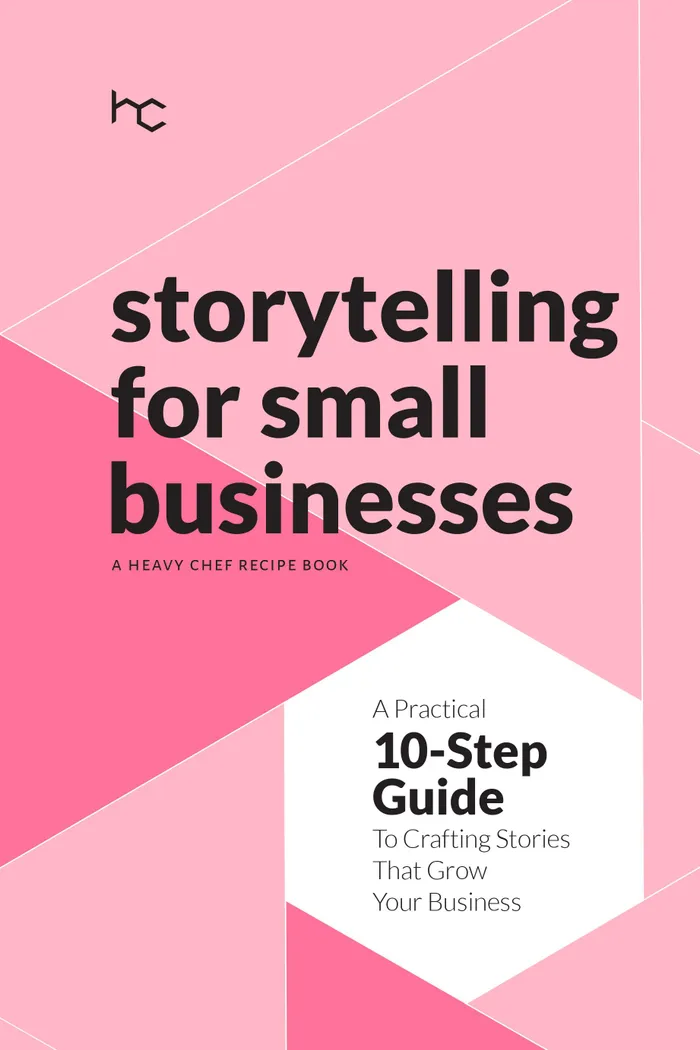The Human Algorithm: Why Storytelling Is the Real Business Strategy

A practical guide that shows entrepreneurs how authentic storytelling can transform small businesses into memorable brands.
Image: Supplied.
Have you ever noticed how some small businesses instantly grab your attention and make you want to be part of their story, while others barely get a second glance? The difference often lies in the power of storytelling.
That’s exactly what Heavy Chef’s Storytelling for Small Businesses reveals and teaches with remarkable clarity. It is a practical, step-by-step guide showing entrepreneurs how to craft stories that don’t just sell products but create genuine emotional connections that fuel business growth.
The Hero's Journey: Entrepreneurs in a Noisy Marketplace
The hero in this story is every entrepreneur or small business owner struggling with the universal challenge of standing out in a noisy marketplace. Whether new or seasoned, many founders wrestle with the question: How do I make my business memorable and relatable in ways that truly engage customers? The book offers an answer through a straightforward framework grounded in real experiences from some of South Africa's most successful entrepreneurs, marketers, and creative specialists.
An Authentic Voice
What makes this guide distinctive is its unpretentious, authentic voice. Unlike many business books that feel theoretical or overly complex, it speaks directly to entrepreneurs with a guiding hand. The emphasis on founder-led stories as the heart of brand building resonates deeply, especially in the South African context where genuine connection is priceless. It teaches you how to position your business as more than just services or products, but as narratives imbued with human struggles, values, and victories.
The Synergy of Influential Frameworks
When I compare these storytelling principles with Daniel Priestly’s Scorecard Marketing and Key Person of Influence, and John Demartini’s The Values Factor, a powerful theme emerges. Success in today’s small business landscape requires clarity, authenticity, and purposeful connection.
Priestly’s work gives entrepreneurs frameworks for creating influence and visibility through structured marketing and personal brand development, with measurable outcomes like scorecards and influence steps. Demartini encourages alignment with one’s deepest values to fuel motivation and authenticity in business pursuits. Heavy Chef’s storytelling approach complements these by focusing on how to communicate all of that, including your brand, your influence, and your values, through stories that make people care.
Where Priestly teaches the “what” and “how” to position and promote, and Demartini explores the “why” rooted in values, Heavy Chef captures the “who,” the founder’s genuine voice. Together, these form a powerful trilogy: build your brand strategically, ground it in your true values, and bring it to life through authentic storytelling that reaches people on a human level.
Empowering Lessons in Storytelling
From my perspective, the most empowering lesson is that storytelling is not just a marketing tactic but a strategic tool that builds trust and loyalty by making customers feel part of something bigger. The guide demystifies storytelling, breaking it down into digestible steps with templates and real-life examples. It teaches how to identify your business’s hero (often the customer), the challenges they face, and how your business offers resolution in a classic narrative structure made practical.
Example Plot Structure
To illustrate, here’s an example plot you might create following this approach. The hero is the customer seeking a healthier lifestyle but overwhelmed by conflicting nutrition advice. Their challenge is frustration with diets that don’t work. They discover your small business, which offers personalised, empathetic nutrition coaching. With your guidance, they gain clarity and sustainable results, transforming their health. This transformation turns them into loyal advocates of your brand.
Practical Steps to Develop Your Story
Identify the hero (usually the customer) and understand their true motivations and struggles.
Define their conflict or challenge that your business can solve.
Show the journey with your business as the helpful guide.
Highlight the positive resolution and the transformation your business enables.
Use relatable, empathetic language to connect emotionally.
End with a call to action, inviting customers to begin their own success story with you.
The book’s strength lies in its clarity. It repeats a practical storytelling framework that’s easy to apply and hard to forget.
The Significance of South African Roots
I also found the South African roots particularly meaningful. The inclusion of founder stories from varied local businesses adds credibility and relatability, showing that effective storytelling is not about polished, perfect narratives but about authentic, human experiences, struggles, and triumphs that resonate across cultures and contexts.
Your Story is Your Greatest Asset
To me, Storytelling for Small Businesses stands out not just as a business tool but as an invitation to show up fully as the person behind the brand. It’s about turning your business journey into a meaningful story that customers want to be part of one filled with hope, challenge, growth, and shared purpose.
If you’ve ever felt stuck trying to figure out how to connect with your audience beyond sales pitches and features, this guide is a reminder that your story is your greatest asset. By learning to tell it well, you create something far more valuable than transactions. You create relationships that honour both the head and the heart on the entrepreneurial journey.
* Published by Pan Macmillan South Africa.
Related Topics: